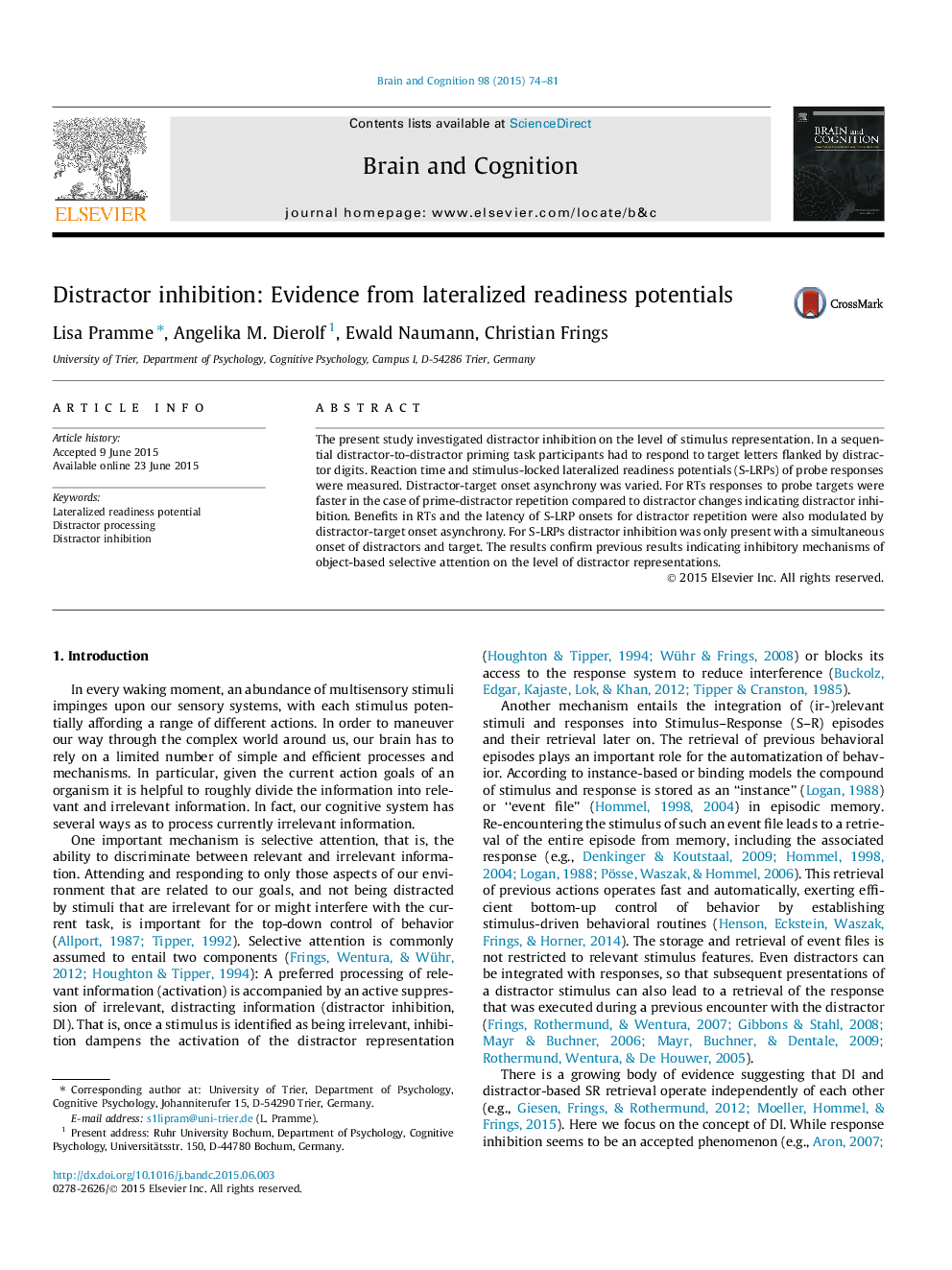| Article ID | Journal | Published Year | Pages | File Type |
|---|---|---|---|---|
| 923930 | Brain and Cognition | 2015 | 8 Pages |
•In a sequential distractor-to-distractor priming task RT and S-LRP onset latencies were measured.•A target letter flanked by distractors with varying Distractor-Target SOA had to be identified.•Distractor inhibition was indexed by distractor repetition benefits for RTs and S-LRPs.•Inhibition sets prior to lateralized response activation at the level of distractor representation.
The present study investigated distractor inhibition on the level of stimulus representation. In a sequential distractor-to-distractor priming task participants had to respond to target letters flanked by distractor digits. Reaction time and stimulus-locked lateralized readiness potentials (S-LRPs) of probe responses were measured. Distractor-target onset asynchrony was varied. For RTs responses to probe targets were faster in the case of prime-distractor repetition compared to distractor changes indicating distractor inhibition. Benefits in RTs and the latency of S-LRP onsets for distractor repetition were also modulated by distractor-target onset asynchrony. For S-LRPs distractor inhibition was only present with a simultaneous onset of distractors and target. The results confirm previous results indicating inhibitory mechanisms of object-based selective attention on the level of distractor representations.
